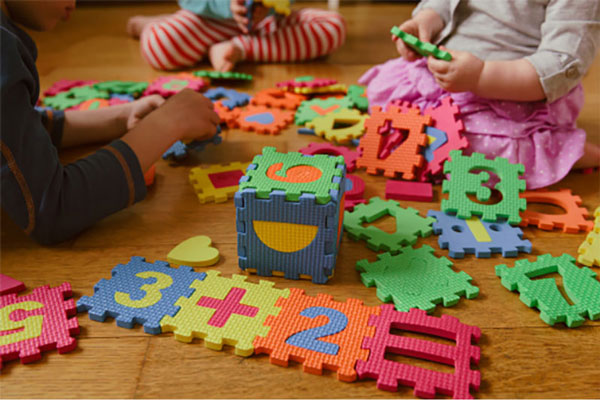Teaching your kids about financial literacy doesn't have to be boring. Here are some creative ways to use games to make learning fun for your children.
May 26, 2025 By John Davis
As a parent, you are responsible for teaching your kids important life skills such as financial literacy. Teaching these difficult concepts can often be challenging and intimidating for both the parent and the child. Fortunately, there are plenty of creative ways to keep them engaged as they learn more about managing their money.
By incorporating fun games into their learning experience, you can make this task easier while giving them the valuable tools they need to succeed in the future. We will discuss several ideas on how to teach children financial literacy through various activities that involve games.
Teach Kids Financial Literacy Through Games

Teaching financial literacy to kids through games is a great way to make learning more enjoyable and engaging. Games are a fun way for children to practice budgeting and managing their money while still having fun. By incorporating educational elements into an activity, you can turn any game or activity from something that simply passes the time into something that teaches valuable skills.
Utilizing fun learning tools to teach kids financial literacy

One of the most effective ways to teach children financial literacy is through online and interactive tools. Many websites offer games that help kids better understand budgeting, saving, spending, and investing. These games are designed to be both entertaining and educational at the same time. Some examples include virtual stock trading simulations, board or card games related to money management, or even video games that involve making financial decisions to progress throughout the game.
Different Kinds of Teach Kids Financial Literacy Through Games
There are a variety of different types of games that can be used to teach kids financial literacy. Each type offers unique advantages and allows for variations in the game, making it possible to find an activity that your child will enjoy. Some strategies include:
Board or card games with money management themes
Board or card games are a great way to teach kids financial literacy in an engaging and fun way. These activities allow children to practice budgeting, saving, spending, and investing as they play. Examples of such games include Monopoly, Payday, Life, The Game of Life Junior Edition, Bull Market Trading Card Game, and Moneywise Kids.
Financial Simulation Games
Simulation games allow children to experience what it is like to manage money without any real-life consequences. This type of activity allows them to make mistakes while still having the chance to learn from their experiences and gain valuable knowledge in the process. Examples of simulations include Mint Tycoon, Virtual Investing Simulator & Starter Pack Bundle: Learn to Trade Stocks & Invest in ETFs and BuyLow.
Video Games with Money Management Themes
Video games are an increasingly popular way to entertain children and teach them important skills such as financial literacy. Several video games incorporate money management themes into their gameplay.
Examples include Money Town — The Financial Literacy Game for Kids, Budget Battle: Money Matters!, and SimCityEDU: Pollution Challenge! Playing these educational video games allows kids to have fun while learning the value of responsibly managing their finances.
Online quizzes or activities related to financial topics
Online quizzes and activities related to financial topics are an effective way to teach children financial literacy in a fun and interactive way. These activities cover various topics such as budgeting, saving, investing, interest rates, credit cards, etc. Examples include the Money Adventure game from Better Money Habits, Sesame Street’s Financial Literacy Quiz for Kids, and the Financial Planning Activity from Freddie Mac.
Money board games such as Monopoly or The Game Of Life
Each one of these options provides a fun way to learn valuable skills and concepts related to managing finances. Many online resources can help you create homemade versions of these activities tailored to your child’s age and interests.
By teaching your kids financial literacy through games, you can make learning about money management more enjoyable and give them the necessary skills to benefit their future.
Acting out real-world scenarios
Another great way to teach kids about financial capabilities is by setting up various acting scenarios where children pretend to be adults managing their finances. This can include acting out scenarios such as opening a bank account, paying bills, or even investing in the stock market. Through these activities, kids can gain valuable experience with financial decisions without risking making real-life mistakes.
Benefits of teaching kids financial literacy at a young age
- Enhanced decision-making capabilities: Financial literacy helps children learn to make better spending, saving, and investing decisions.
- Improved long-term financial planning: A child who understands budgeting and money management better can more effectively plan their future.
- Reduced risk of debt problems: Teaching kids the basics of money management early can help them avoid crippling debt later in life.
- Increased appreciation for hard work: Children who understand the importance of earning and saving money through hard work will be more likely to appreciate its value when they are older.
- Improved communication skills: Discussing financial topics is an important to financial literacy and can help children improve their communication skills.
- Higher levels of confidence: When children understand the basics of money management, they tend to feel more confident in handling their finances.
- Understanding of investments: Learning about investing at a young age can benefit a child’s future, as it will give them an understanding of how different types of investments work.
- Improved math skills: Financial literacy involves a lot of basic arithmetic calculations, which helps children practice and improve their mathematical abilities.
By teaching your kids financial literacy at a young age, you can help them become more responsible and financially capable adults. With the right guidance, activities, and resources, teaching children financial literacy can be an enjoyable experience that will benefit them greatly.
FAQS
What game teaches children about money?
Several board games can be used to teach children about money, such as Monopoly or The Game of Life. There are financial literacy quizzes and activities available from organizations like Freddie Mac that can help kids learn more about managing finances.
At what age should you start teaching your child about money?
It is always early enough to start teaching your child about money. Parents should introduce basic concepts like saving and spending at an early age (around 4-5) and progress to more complicated topics such as investments and taxes as the child ages.
How can parents help their kids learn financial literacy?
Parents can help their kids learn financial literacy by setting up activities to teach basic money management skills, teaching them about the value of money, and having open conversations about finances.
Setting a good example for children by managing your finances responsibly is also important. Parents can use resources like apps, books, and games to help teach their children about money. It is important to stay engaged and answer any questions your child may have about financial topics.
Conclusion
From playing investing board games to using apps, teaching kids financial literacy can be both helpful and fun. Suppose you’re considering introducing your child to budgeting and savings. In that case, we encourage you to get started ASAP – it’s never too early to start the conversation with your kiddos and set them up for a lifetime of financially controlled success.
Games are a great way to kick off that learning process because they make conversations around finance less daunting while keeping things lighthearted and interactive.
On this page
Teach Kids Financial Literacy Through Games Utilizing fun learning tools to teach kids financial literacy Different Kinds of Teach Kids Financial Literacy Through Games Board or card games with money management themes Financial Simulation Games Video Games with Money Management Themes Online quizzes or activities related to financial topics Money board games such as Monopoly or The Game Of Life Acting out real-world scenarios Benefits of teaching kids financial literacy at a young age FAQS What game teaches children about money? At what age should you start teaching your child about money? How can parents help their kids learn financial literacy? Conclusion
Best Used Car Sites for 2023

Settling-In Allowance: What is it?

What are the 401(k) Plan Contribution Limits?

Where In The United States Is Best To Purchase A Winter Home?

Ways to Make Walmart Credit Card Payment

Warren Buffett's Investment Strategy and Approaches

Difference between 457 Plan and 403(b) Plan

Definition, Term, and Transaction Date of Credit Card Posting

Continental Life Insurance: A Comprehensive Review

Impact of Basel III rules on bank investment

10 Best Small Personal Loan Options for 2020
